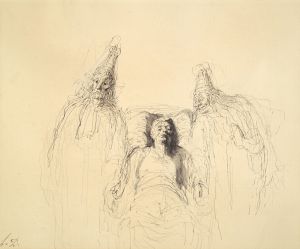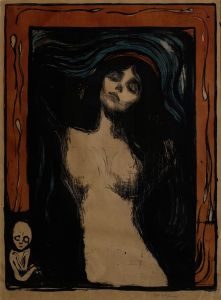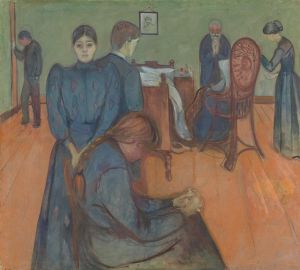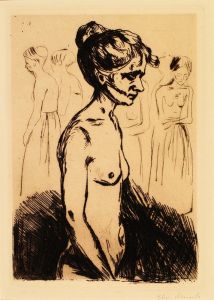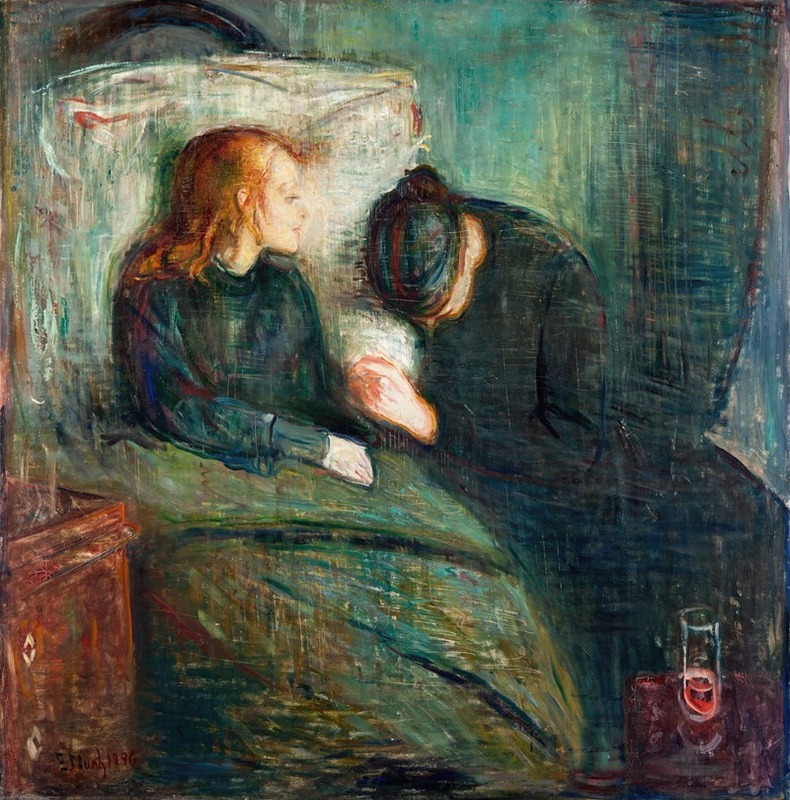
The Sick Girl
A hand-painted replica of Edvard Munch’s masterpiece The Sick Girl, meticulously crafted by professional artists to capture the true essence of the original. Each piece is created with museum-quality canvas and rare mineral pigments, carefully painted by experienced artists with delicate brushstrokes and rich, layered colors to perfectly recreate the texture of the original artwork. Unlike machine-printed reproductions, this hand-painted version brings the painting to life, infused with the artist’s emotions and skill in every stroke. Whether for personal collection or home decoration, it instantly elevates the artistic atmosphere of any space.
"The Sick Girl" is a significant painting by the Norwegian artist Edvard Munch, created in 1885-1886. This work is one of Munch's early masterpieces and marks a pivotal moment in his artistic development, showcasing his transition from traditional realism to a more expressive and symbolic style that would later define his career.
The painting depicts a poignant scene of a young girl lying in bed, evidently ill, with a somber and contemplative expression. Beside her sits a woman, often interpreted as her mother, who appears to be in a state of deep sorrow and contemplation. The composition is intimate and emotionally charged, capturing the profound sense of helplessness and melancholy associated with illness and impending loss.
Munch's inspiration for "The Sick Girl" is believed to have been drawn from his personal experiences. His older sister, Johanne Sophie, died of tuberculosis when Munch was just 14 years old, a traumatic event that profoundly affected him and influenced much of his later work. This personal connection imbues the painting with a sense of authenticity and emotional depth, as Munch channels his own grief and memories into the artwork.
The painting is notable for its use of color and brushwork, which contribute to its emotional impact. Munch employs a muted palette dominated by greens and browns, which enhances the somber mood of the scene. The brushwork is loose and expressive, a departure from the more detailed and precise techniques of his earlier works. This approach allows Munch to convey the emotional intensity of the moment, emphasizing the psychological over the physical reality.
"The Sick Girl" is often regarded as a precursor to Munch's later, more famous works, such as "The Scream." It demonstrates his early exploration of themes such as illness, death, and existential despair, which would become central to his oeuvre. The painting also reflects Munch's interest in the Symbolist movement, which sought to express the emotional and spiritual dimensions of human experience through art.
Upon its exhibition, "The Sick Girl" received mixed reactions. Some critics praised its emotional depth and innovative style, while others were unsettled by its raw and unflinching portrayal of suffering. Despite the initial controversy, the painting has since been recognized as a significant contribution to modern art, illustrating Munch's ability to convey complex emotional states through his distinctive visual language.
Today, "The Sick Girl" is housed in the National Gallery in Oslo, Norway, where it continues to be studied and admired for its artistic and historical significance. It remains a testament to Munch's skill as a painter and his ability to transform personal tragedy into universal themes that resonate with audiences worldwide. Through this work, Munch not only memorializes his sister but also explores the broader human experience of suffering and loss, making "The Sick Girl" a timeless piece of art that continues to evoke empathy and reflection.







